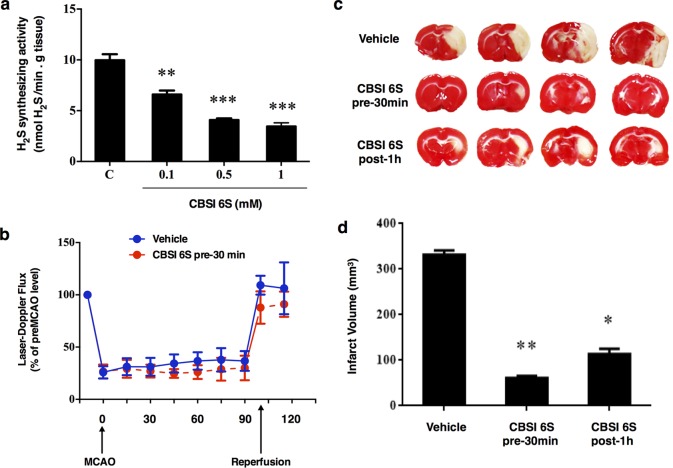Figure 5.
Neuroprotection by CBS inhibitor 6S against ischemic injury induced by transient middle cerebral artery occlusion (tMCAO). (a) Inhibition of H2S synthesizing activity in brain homogenate at varying concentrations of CBSI 6S. Data are presented as mean ± SEM, n = 3–7; **p < 0.01, ***p < 0.001 against no inhibitor control (C) by Bonferroni. (b) The right MCA was occluded by the insertion of a suture through the carotid artery for 100 min. The blood flow in the affected area was monitored by a Laser-Doppler device showing a reduction of about 70–75% and returned to pre-MCAO levels upon reperfusion, n = 7–10. (c) Infarct volumes at 24 h after tMCAO. Top panel shows representative TTC-stained forebrain sections of a vehicle-treated, a CBSI 6S-pretreated and a CBSI 6S-post-treated rat. CBSI 6S or vehicle was administered by intracerebroventricular (icv) injection 30 min before tMCAO (CBSI pre-30 min) or 1 h after middle cerebral artery occlusion (CBSI post 1 h). (d) Bottom panel shows the calculated infarct volumes of the three groups, n = 5–10, ANOVA: F (2, 19) = 7.89, *p < 0.05, **p < 0.01 against vehicle control group by Bonferroni.

